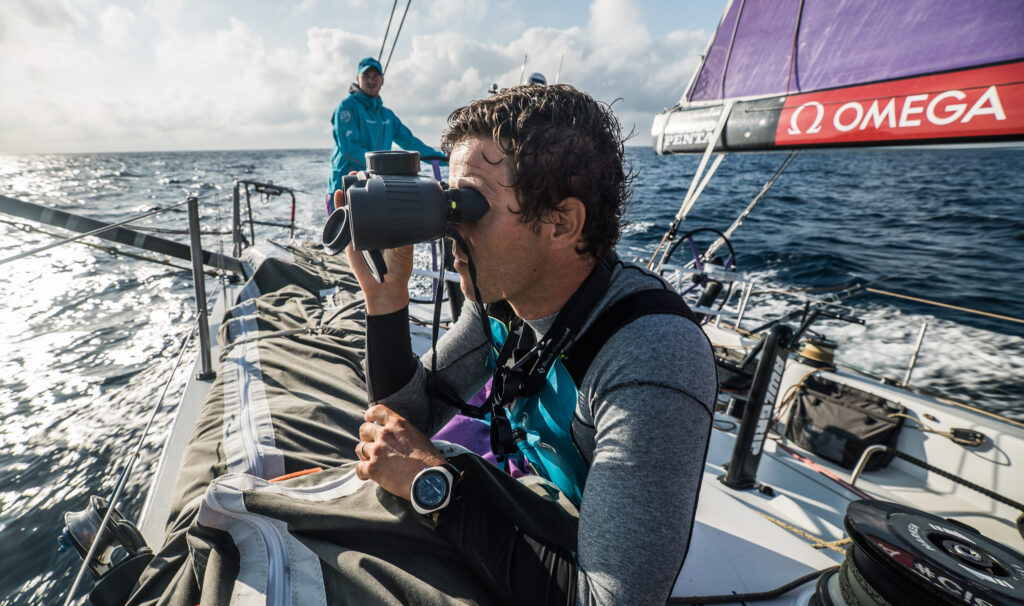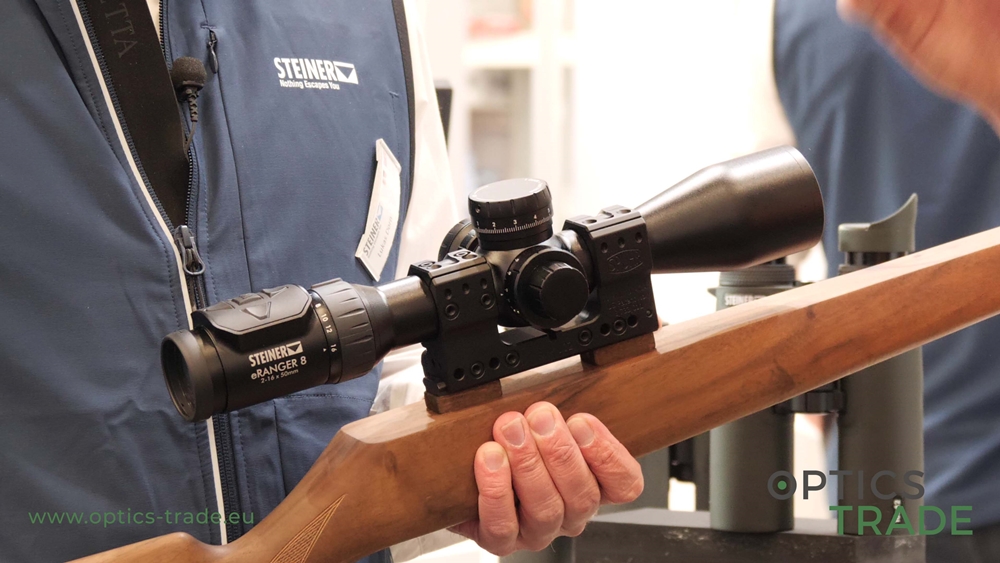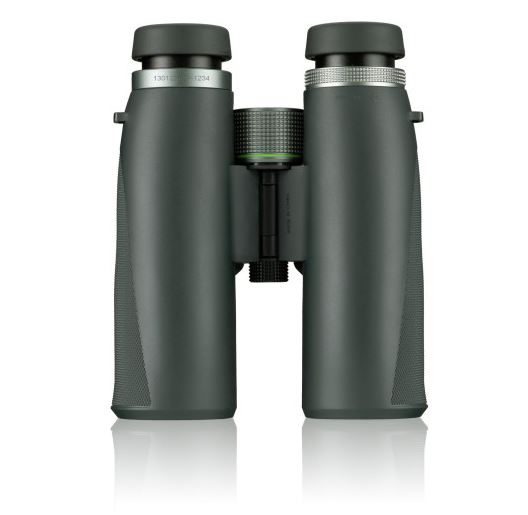Introduction
Experts are often asked if a set of binoculars will work underwater. Although, thanks to nitrogen-purging, binoculars can withstand extreme humid climatic conditions and the occasional splash of water, binoculars are technically incapable of being used under the surface of water, and therefore, no optics manufacturer has ever raised this claim, not even the huge names like Leica, STEINER or Swarovski.
There could be another aspect to this question. They might want to ask if a pair of binoculars would still work after they had been accidentally dropped in water and retrieved back immediately. These types of incidents are common in outdoor activities, especially near water bodies, such as marine navigation, whale spotting, canoeing and observing animals during wildlife safari. Most of the time, the owners manage to rescue their binoculars before they sink deep down, but often times the damage has already been done. While the seals are capable enough of stopping water from entering inside the optical cavity, it is still a good idea to get the devices checked by an experienced repairman before storing them back.

Underwater use
Since they are not designed to be used under the surface of water, binoculars are impossible to work underwater. In addition to their design, there are several factors that make observing objects under water difficult with a binocular. Water has a refractive index of 1.333 which is substantially higher than that of air, which is 1.0003. This makes water a highly refractive substance which refracts all light rays that pass through it. To understand this further, insert a straight object, such as a pencil, in a bowl filled with water. The refractivity of water will make the part of the pencil that is under water to appear bent. Similarly, inside a lake or ocean, the abundant quantity of water will make anything to appear distorted and, therefore, trying to look at distant objects through a binocular will not work.
On the other hand, seawater has large quantities of dissolved salts. While salts play a vital role in regulating our blood pH, our eyes cannot tolerate staying in salty water for long, which is why humans cannot see underwater with bare eyes. To counter this problem, most divers need to wear specially designed goggles to protect their eyes from getting exposed to the harsh seawater.
These underwater goggles are not like regular prescription spectacles or sunglasses. Instead, they are designed to be relatively large in size to accommodate and enclose our eyes completely so that water does not enter inside easily. Due to their large size, binoculars cannot be used along with these goggles, even the ones with large eye relief values. The exit pupil of the binoculars will form at some distance from the eye and the resulting view will not be sharp enough to observe or understand.
Additionally, water is known to be a turbid substance, which means the deeper you swim under the surface of water, the less amount of sunlight will be at the point. Since binoculars are optic instruments, they rely and require ample amount of light to produce consistent bright images. Hence, it will be close to impossible to observe underwater objects with binoculars, even with the models that feature large objective lenses.
Even to search for sunk objects, such as the Titanic or other monumental entities, the search and rescue team employ a technology known as Sonar, which uses electromagnetic waves to locate underwater objects. The waves strike the surface of the objects and reflect back towards a radar on a ship to produce images of sunk objects.
Can binoculars get wet?
While binoculars make excellent travel companions on such excursions, a number of people have shown concerns about their binoculars getting in contact with seawater. Most of them believe their binoculars will not work again if they get by accidentally falling into water or by even a little splash of water. Small boats, canoes and even large ships are seldom stable and they are continuously rocked by waves forming around them, especially in the rainy season when it is impossible to make the boats stable, even after anchoring. In situations like this, the probability of binoculars accidentally falling into water is quite high, therefore the concerns of binoculars are valid.
All modern binoculars, especially from top optics manufacturers like Leica, Zeiss, Swarovski and Steiner, offer Nitrogen-purging, a feature that has been praised since its inception in the 1970s. Purged binoculars contain an inert gas, such as Nitrogen or Argon, under pressure along with air-tight seals at all assembly joints, especially along metal and glass contacts. This filler gas stops dust particles and water molecules to enter from the outside into the optics housing by using a positive pressure difference. Therefore, even if the seals are compromised during a hard fall, the escaping molecules of the inert gas will keep the foreign particles at bay while you can get your devices checked for damage and let an experienced personnel repair them.
The origin of the fear circulating thing around the waterproofness of binoculars is linked with the older Porro prism binoculars. Porro prism binoculars, named after Ignazio Porro, were the first to introduce prisms inside binoculars to lengthen the light trajectory and correct the orientation of images through the eyepiece. The older Porro prism binoculars had a simple construction and did not have many features of today’s modern binoculars. One of the features they did not accommodate was Nitrogen Purging along with airtight gaskets, which is considered unnatural by today’s standards. The central focusing mechanism in these type of binoculars was mainly considered the culprit for allowing moisture to enter inside the barrels, due to moving eyepieces and absence of seals. These binoculars accumulated significant amount of moisture inside the optical cavity if they were exposed to water or continuously used in humid climatic conditions. Regardless of the technical obsolescence, some enthusiasts still favor the dated porro prism binoculars because of their retro look and feel.
The new Porro Prism binoculars, however, perform head-to-head with their roof prism binoculars. They feature individual focusing mechanisms for both each barrel that serves as a reinforcement along with Nitrogen-purging and airtight lens compartment. These modern features make them one of the best choice in terms of advanced waterproofness. All optics manufacturers manufacture both types of binoculars, since some prefer the zigzag design while others need a compact device for their exciting excursion trips.
Another problem that originates with the exposure of binoculars to seawater is salt. While the first thing to do is to clean all water droplets from the binoculars after they are rescued from the seawater, sometimes traces of salt is seen stuck on the external surfaces of lenses and binocular housing. The salt appears in the form of white spots after it is dried, so owners can know where to clean. The cleaning process requires a delicate brush or pressurized air to remove the salt stains. Cleaning with a cloth is not recommended by experts since you might exert unintended pressure while cleaning with a cloth, which might press the salt crystals against the surface of lenses resulting in scarring of the nano-coatings and generation of visible scratches.

Water-repellent Coatings
While most other coatings serve to improve light transmittance and reduce unwanted scattering of light, water-repellent hydrophobic coatings are specially designed to protect the binoculars in wet and humid weather conditions, and improve optical performance. The coating causes the water droplets forming on the surface of lenses to turn into small ‘beads’ that roll down the surface of glass effortlessly and are easier to clean afterwards.
How do these coatings work? It is common knowledge that water droplets stick to the surface of glass. The phenomenon, which is called adhesion, is the attraction of molecules of one substance to another substance. To understand this, try emptying a drinking glass filled with water. Even after emptying fully, some drops of water will continue to stick to the glass. This property of water makes it difficult to clean these drops and they often leave marks on the surface of glass. Additionally, water drops accompany dirt and dust most of the time and after water dries up, the difficult-to-clean dirt remains. Having these marks on the objective lenses of binocular is the last thing binoculars owners would want since cleaning these dried marks requires much more than a soft cloth.
Since the adhesive forces in water molecules are greater than the cohesive forces among their individual molecules, water molecules generally have an affinity towards other substances, especially glass. Water-repellant coatings comprise of specialized chemicals that water molecules do not ‘like’ to stick to. These coatings work by preventing water from getting in direct contact with the surface of glass and instead provide a thin chemical film which does not allow water drops to cling. Therefore, the droplets form beads instead of attaching them to the external surface of glass and drop down on their own.
There was no concept of surface coating on lenses before the 1930s. Zeiss was the first among optics manufacturers to notice the possibility of coating lenses with invisible coatings for enhancing light transmittance. Initially the coatings were limited to reducing the reflectivity and scattering of light on objective lenses but it was much later after the Second World War when manufacturers, including Zeiss, realized the potential of chemical coatings to prevent water droplets from clinging onto the surface of lenses in wet weather. Villeroy and Bosh, a dinnerware manufacturer from France, similarly came up with water-resistant coatings for their glassware.
Over the years, all major optics manufacturers have come up with their own in-house water-repellant coatings for lenses. Below are some of the famous names in the market today:
AquaDura
AquaDura is an external lens coating for binoculars and similar optical equipment. Developed by Leica, the coating is claimed to decrease the adhesion between water molecules and the surface of glass. When this adhesive force becomes less than the cohesive forces, water forms bead-life drops instead of the regular clingy droplets.
LotuTec
Similarly, Zeiss Optics came up with their formula for a water-resistant coating and have named it LotuTec. Zeiss states that their products, especially binoculars, will be protected from accumulation of water drops on the surface of lenses, along with dirt particles.
RainGuard
Developed by Bushnell, the signature RainGuard coating is used in most optics products of the company and allows for minimal water drop formation on the surface of objective and eyepiece lenses, therefore, the binoculars can still be used in rainy weather without obstruction caused by water drops.
ArmorTek
ArmorTek is a protective surface coatings solution provider. With over 15 years of experience in a number of areas, their scratch and water-resistant lens coating solutions are being used by several big names in the optics industry, including Vortex.
Others water-repellant coatings
There are several other water-repellant coatings available in the market for optical devices, like the Swarovski’s SwaroClean, but the purpose remains the same. All of these hydrophobic coatings prevent lens fogging on the external surfaces of objectives and eyepiece lenses that is caused by condensation from snow, rain, sleet or even from the observer’s breath.

Marine Binoculars
One of the most important area for binoculars use is with the naval forces, marine navigation, boating excursion, cruise ship vacations, whale spotting and general sight- seeing around water bodies. People use binoculars to see very distant ships or boats, distant islands, whales and other unique water creatures. Water transport vehicles, including yachts and small motorboats are rarely stable in water, and are usually rocking to and fro because of the water waves, it is difficult to handle delicate optical instruments on them. Magnifications plays an important role here and a binocular with a higher magnification will be difficult to hold steadily, since the boats are seldom stable.
Therefore, binoculars designed for marine use have magnification power of 7x usually, along with objective sizes of 50 mm or 30 mm, depending on the daylight conditions. A larger objective lens will ensure brighter images compared to a small device, but most people are comfortable carrying a smaller and lightweight set of binoculars, especially in small boats. In addition, marine binoculars are mostly comprised of Porro Prisms due to their relatively brighter images compared to roof prism technology. The incoming light is reflected comparatively more times in roof prisms, which contributes to more loss of light than porro prisms.
Another important characteristic of marine binoculars is the individual focus mechanism for each optical barrel. Separate focusing ensures that the barrels remain protected from water and internal fog when exposed to humid climatic conditions at the sea. Since the barrels are not connected to each other, the Nitrogen-purging is considered to be more effective in fog-proofing and waterproofing the binoculars. On the other hand, most conventional binoculars feature a central focusing mechanism, they are not suitable to be used around humid climates.
Marine binoculars from notorious brands, such as Steiner, Fujinon and Nikon, feature a rubber armor around their casing, which serves a number of purposes. Firstly, they are comfortable to hold with both hands without the fear of accidental fall in water due to the unstable and constantly rocking boats. Rubber has a higher co- efficient of friction and it provides considerable friction against our hands, unlike most binoculars with plastic or metallic housings. Secondly, a rubber armor provides protection against salty seawater. Since seawater is corrosive to both metals and optics, a slight exposure of a pair of binoculars to it can cause irreversible damage to the housing and glass components.
A rubber armor is not just for prevention to water exposure, but it is highly effective in protecting the delicate binoculars in case of hard falls and the casual wear and tear. Devices that have this feature are made to last forever, if they are taken care of and stored in a secure place after use.
Floatable Binoculars
To further make the use of binoculars around sea easier, most marine binoculars feature a floatable construction. This usually involves the use of low density rubber and plastic materials in the construction of binocular housings. This design prevents a pair of binoculars from sinking deep down in the waters and keeps it afloat the water surface. This way the owners can recover their precious companions with the help of a skimmer net. Since the binoculars remain afloat, they are usually saved from damage caused by water.
The floatable construction is, however, quite rare since it only comes with binoculars specifically designed for marine use. One of the manufacturers of marine binoculars is Delta Optical, a Polish optics manufacturer and reseller. Their optical equipment, including binocular and telescopes are famous not just in Poland but throughout Europe. Marine binoculars do not come cheap, thanks to their extraordinary housing and optics for dealing with a challenging atmosphere and greater chances of saltwater exposure around lakes, rivers and sea.
Floatable Straps
Another easy way to protect binoculars and similar optical devices around inland and sea water is to equip them with straps made of floatable materials. Marine binoculars come with this feature right out-of-the-box, but the good thing about the straps is that they can be attached to any binoculars regardless of their type and instantly turn them into floatable binoculars, thereby, preventing them from sinking deep down to the sea floor.
The floatable straps are designed with highly bright and vivid colors so that it is easier for owners to locate their devices if they fall out of their hands into the water. Optics manufacturers, such as Nikon and STEINER, offer floatable straps and harnesses to keep binoculars protected on-board. Several brand-less and cheap straps are available at optics stores too, but it is always better to opt for reliable names.
Conclusion
To conclude, binoculars cannot be used under water and there are two reasons as to why underwater observation is not possible. Since it is impossible to see while swimming due to the irritating saltwater, swimmers and scuba divers make use of underwater goggles to comfortably look around under the surface of water. The spectacles are considerably large to safely cover both eyes and since majority of the binoculars do not have very high eye relief values, using any binoculars along with these goggles is close to impossible.
Since binoculars come with the Nitrogen-purging feature, most people think they will be safe to use underwater, but this is not case. Although air-tight binoculars can withstand humid and rainy climatic conditions, a continuous exposure to water, especially saltwater, can damage their optics and construction. Although some manufacturers, including Canon, offer water-resistant binoculars that can remain intact even after remaining under water for a small period and a certain depth.
To protect binoculars from sinking deep down to the bottom of lakes or sea, marine binoculars feature a rubber construction which keeps them afloat on the surface of water in case of an accidental fall. The rubber casing also allows for a comfortable grip on the binoculars, which is crucial in wildlife excursions and river sightseeing.
Marine binoculars come up with a floating strap that further serves to keep them afloat on the surface should they fall into water while looking over the deck boundary. These straps can be attached to conventional binoculars as well to ease the fear of using them around water bodies. Even if they are recovered immediately, saltwater may still have reached inside minute pockets inside the housing and especially near lenses. Extra care is required to clean the saltwater since it may contain sand particles which may rub against the surface of lenses and adversely scar the lens coatings.




